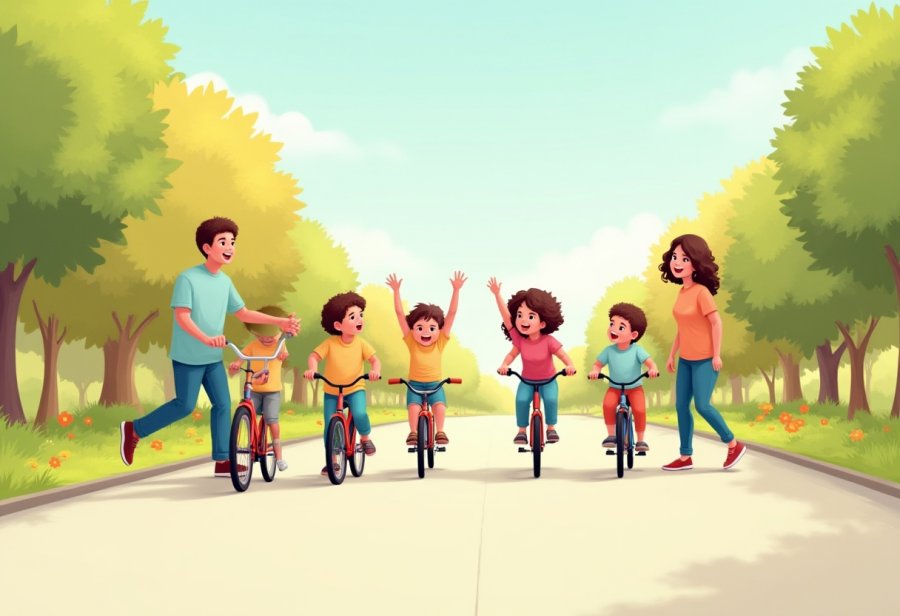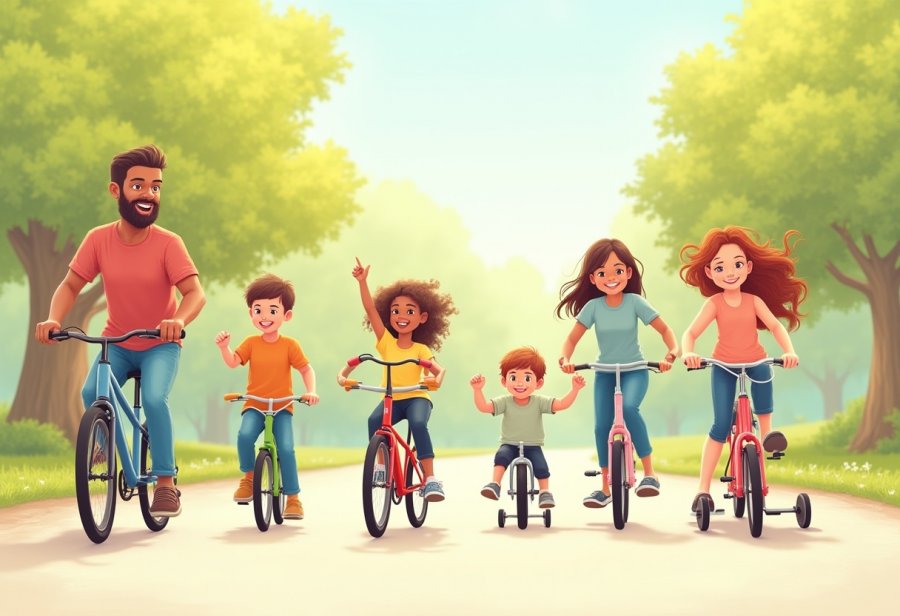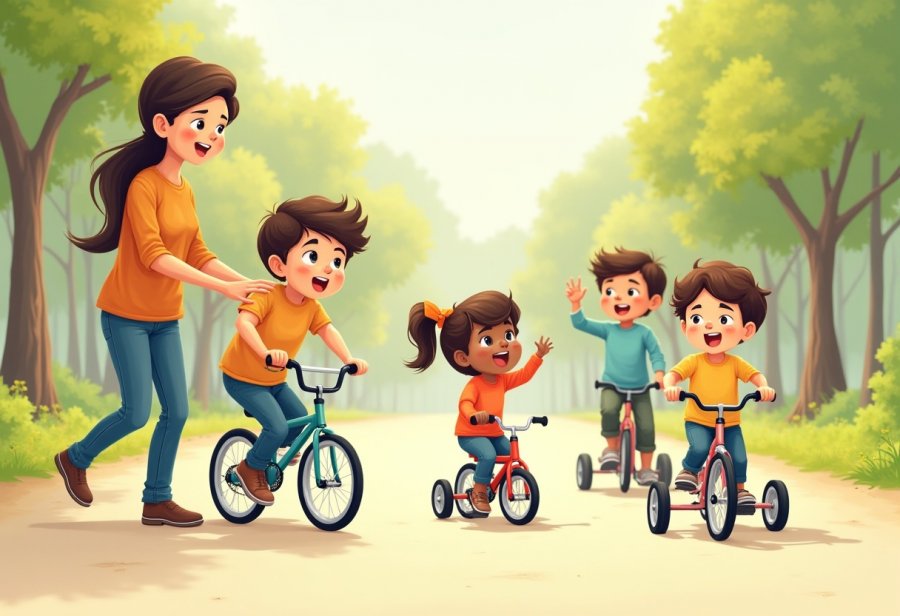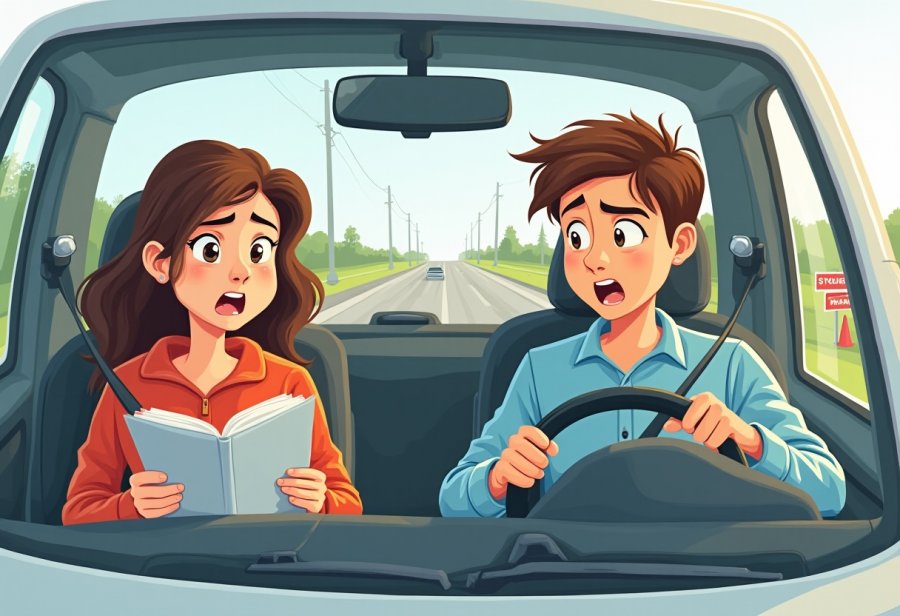Learning to ride a bike symbolizes more than just childhood achievement; it embodies courage, independence, and the deep bonds of family support. Yet, does the fear of falling overshadow the thrill of freedom? This heartfelt narrative explores how early wobbling attempts, setbacks, and perseverance forge resilient spirits and lasting memories. It reveals that the journey from shaky beginnings to confident riding is filled with emotional growth, trust, and shared triumphs. Supporting guidance, safe environments, and celebrating small victories transform intimidation into empowerment, encouraging both children and adults to embrace challenges. As technology and community initiatives evolve, the future of learning to ride promises even more accessible and inclusive pathways, highlighting that each wobble and fall is a vital step toward independence. Will mastering a bike inspire lifelong confidence and adventure, or does the risk of failure threaten to hold us back? Ultimately, this story invites us to consider how every fall can fuel a ride toward resilience and joy.

Discover the Courage and Connection Behind Learning to Ride
Learning to ride a bike is more than just a childhood milestone; it’s a vivid symbol of courage, independence, and the bonds we share with loved ones. For kids, the moment they push off on two wheels for the first time represents a leap into self-reliance, a step beyond the safety of familiar ground. It’s about trusting their balance, overcoming fears of falling, and discovering that they are capable of more than they imagined. These small victories build confidence that lasts well into adulthood, reminding us all of the power of perseverance.
For families, teaching a child to ride often becomes a cherished ritual. Shared efforts—whether holding the seat, offering encouragement, or cheering from the sidelines—transform a simple activity into a meaningful bonding experience. These moments of wobbling, falling, and getting back up forge lasting memories and deepen trust. They teach children that setbacks are part of growth and that persistence, combined with support, can turn wobbling beginnings into confident rides.
Riding a bike also acts as a gateway to independence. As children learn to balance and pedal on their own, they gain a sense of control over their movement and, symbolically, over their lives. The act of riding becomes a rite of passage, signaling that they are ready to explore the world beyond their immediate surroundings. For adults, rediscovering cycling can rekindle a sense of resilience and adventure, proving that learning and growth are lifelong pursuits.
These themes of courage and connection transcend age, inspiring us to embrace new challenges with a supportive spirit. The journey from hesitant wobbling to confident riding encapsulates a universal lesson: with patience, practice, and encouragement, even fears of falling can be transformed into the thrill of soaring on two wheels. Learning to ride isn’t just about mastering a skill; it’s about nurturing the courage to step into independence and the bonds that make that journey meaningful.
Building a Solid Foundation: The Essentials of Riding
Learning to ride a bike is about more than just balancing on two wheels; it’s a fundamental lesson in patience, persistence, and confidence that sticks with us throughout life. For children, mastering coordination and timing is the first step toward independence. As they practice, wobbling and falling eventually give way to smoother pedaling and better control, reinforcing that effort and perseverance lead to progress. These early experiences teach kids that setbacks aren’t failures but opportunities to learn and grow.
Throughout history, bikes have symbolized freedom and self-reliance, evolving from simple devices to essential tools for independence. Today, cycling continues to represent a universal desire to explore, connect, and develop resilience. Whether in childhood or later years, learning to ride reminds us that growth is a gradual process, often marked by small victories that build self-esteem and motivation. Celebrating these milestones encourages learners to keep pushing forward, even when progress feels slow.
The core skill of balance is the foundation for everything else. It requires body awareness and gentle shifts of weight, which are developed through repeated practice. Wobbling and stumbling are natural parts of the journey, helping learners trust their movements and gain confidence. Supporting guidance from parents or instructors—like holding the bike or offering steadying hands—can ease initial fears, but gradually easing support fosters independence. Small wins, such as pedaling a few more feet or staying upright longer, reinforce belief in oneself and fuel further effort.
Addressing fears is crucial to successful learning. Many beginners worry about falling or hurting themselves, which can hold them back. Creating a safe environment—like a grassy yard or quiet park—and wearing protective gear normalizes mistakes and reduces anxiety. Framing falls as normal steps in learning shifts focus from failure to growth. This mindset helps learners embrace setbacks, stay motivated, and develop resilience—traits that extend beyond riding and into all areas of life.
Breaking the process into manageable steps makes learning to ride less daunting and more enjoyable. Starting with balancing and gliding, then progressing to pedaling and steering, allows learners to build skills gradually. Celebrating small successes along the way keeps motivation high and helps develop a sense of achievement. Patience and positive reinforcement from supportive adults create a nurturing environment where every wobble and fall becomes part of a rewarding journey toward independence.

The Emotional Journey of Mastering the Bike
Learning to ride a bike is as much an emotional adventure as it is a physical skill. The journey is filled with ups and downs—moments of excitement followed by frustration, and bursts of determination that keep pushing riders forward. Those wobbling attempts, near falls, and moments of doubt can feel overwhelming, especially for beginners. Yet, these setbacks are vital steps in building resilience, teaching riders that failure is simply part of the process. Each stumble offers a lesson in balance and control, turning mistakes into stepping stones toward confidence.
Support from family or friends plays a crucial role in transforming fear into assurance. When loved ones cheer as a child wobbles or gently steady the bike, they help ease anxiety and encourage persistence. Celebrating small victories—like staying upright a bit longer or pedaling unaided—gives a sense of progress that fuels motivation. These moments reinforce that progress is attainable, even after setbacks, and deepen the emotional connection to riding.
Fears of falling or getting hurt are common barriers that can stall progress. Creating a safe environment—like a grassy yard or quiet park—helps normalize falls as part of learning. Wearing protective gear and framing mistakes as normal steps in growth fosters a growth mindset, making setbacks less intimidating. This approach encourages riders to see each fall as an opportunity to improve rather than a failure, building emotional strength that extends well beyond cycling.
The emotional rollercoaster continues as progress feels slow at times. Some days bring small wins, while others seem like setbacks. Embracing this natural fluctuation helps learners stay patient and motivated. Recognizing that mastery takes time, and that perseverance is key, keeps spirits high. When learners and supporters approach challenges with understanding and patience, resilience deepens, making the journey more rewarding.
Learning to ride is ultimately about more than physical skills; it’s a process of emotional growth. Facing fears, celebrating tiny successes, and trusting oneself foster a sense of independence and self-confidence. The shared struggles and triumphs forge bonds and teach that setbacks are simply part of growth. With patience, support, and persistence, even the most wobbly beginnings can lead to confident, independent riding, turning a childhood milestone into a lifelong source of joy.
For those eager to continue their cycling journey, exploring comprehensive guides can provide valuable tips and motivation. To learn more about effective bike riding techniques and best practices, check out this helpful resource on bike riding tips. Embracing these insights can help build confidence and ensure a safer, more enjoyable experience on every ride.
Effective Strategies to Teach and Learn Riding Skills
Teaching someone to ride a bike effectively starts with selecting a suitable environment. A quiet park, an empty parking lot, or any open space free from traffic and obstacles provides a safe setting for beginners. Such spaces allow learners to focus solely on balancing and pedaling without the distraction or danger of cars. This calm environment also offers a safe area to fall and try again, helping to build confidence without feeling overwhelmed.
Using a bike that fits well is crucial. An appropriately sized bike makes controlling and maneuvering easier, giving learners a better sense of mastery early on. Protective gear like helmets, knee pads, and elbow pads isn’t just about safety—it reassures beginners and allows them to concentrate on developing their skills without fear of injury. Starting with balance bikes or training wheels can make initial steps less intimidating, providing a stable platform that fosters coordination and confidence.
Breaking the learning process into small, achievable steps keeps progress manageable. Begin with balancing and gliding, then introduce pedaling, steering, and stopping. Supporting guidance, such as gently holding the bike or stabilizing it from behind, can boost confidence, but it’s important to gradually reduce support as skills improve. Celebrating each small victory encourages persistence and makes the experience more enjoyable, reinforcing that progress is within reach.
Patience and emotional reassurance are just as vital as physical guidance. When a rider stumbles or falls, instead of focusing on mistakes, emphasize effort and progress. Viewing falls as normal parts of learning, and normalizing them with protective gear, helps reduce anxiety. Framing setbacks as opportunities to learn fosters resilience and encourages learners to keep trying, even when progress seems slow.
Creating a supportive environment is key. Avoid busy streets or uneven terrain, which can heighten anxiety and increase risk. Instead, choose smooth, grassy or dirt surfaces that cushion falls and allow for controlled practice. Providing a space where mistakes are seen as natural steps in growth helps normalize setbacks and builds a growth mindset, making learners more willing to persevere.
Support from family or community resources can significantly enhance the learning experience. Local bike clubs, beginner classes, and instructional videos offer additional encouragement and structure. These resources introduce fun drills and exercises that reinforce skills gradually, making the journey less daunting and more engaging. Combining hands-on practice with community support creates a nurturing atmosphere where learning to ride becomes accessible and enjoyable for all.
The overall approach should be flexible, tailored to each learner’s pace. Recognizing that everyone progresses differently ensures patience and reduces frustration. As confidence builds, learners feel more motivated to challenge themselves, turning initial fears into a sense of achievement. With the right environment, encouragement, and patience, teaching someone to ride transforms into a rewarding experience that fosters independence and lifelong enjoyment of cycling.

Looking Ahead: Innovations and the Future of Cycling Education
Learning to ride a bike is more than just acquiring a new skill; it opens the door to independence, confidence, and unforgettable memories that stay with us throughout life. As we look ahead, innovations like virtual reality training are beginning to reshape how beginners approach learning. These tools create safe, controlled environments where the fear of falling is minimized, allowing new riders to build trust and coordination before taking their first real pedal strokes. Such advancements make the process less intimidating and more inclusive, encouraging more people to embrace cycling as a source of freedom.
Alongside technology, community programs and local initiatives are gaining momentum. Bike safety workshops, beginner classes, and cycling clubs foster supportive spaces where learners of all ages can develop skills within a nurturing environment. These efforts highlight not only the physical aspects of riding but also the social and emotional bonds formed through shared experiences. Celebrating progress together reinforces motivation, transforming cycling into a communal activity that encourages persistence and joy.
Urban infrastructure is also evolving to support this movement. Cities are investing in bike-friendly streets, dedicated lanes, and safe paths, making cycling more accessible and appealing. These improvements reduce safety concerns and invite more people to see biking as a practical and sustainable way to navigate daily life. As infrastructure grows, so does the opportunity for independence—whether for children commuting to school or adults exploring new routes. Learning to ride becomes not only a personal milestone but part of a larger push toward healthier, greener communities.
The core lessons learned during this journey—courage, resilience, and support—remain central. Facing fears of falling or failure is natural, but embracing these challenges fosters emotional strength and perseverance. Sharing the experience with family and friends deepens bonds and teaches that setbacks are just steps toward mastery. With patience and encouragement, even the most hesitant learners can transform their wobbling starts into confident rides.
Looking forward, the integration of smart technology, online communities, and innovative educational methods promises to make learning to ride more engaging and accessible than ever. Digital coaching, interactive tutorials, and virtual support networks will supplement traditional instruction, breaking down barriers for hesitant learners. As these tools become more widespread, cycling will continue to symbolize resilience, independence, and shared progress—an enduring reminder that every pedal stroke is a step toward growth.
In the end, learning to ride a bike embodies much more than physical mastery; it’s a journey of personal development and community connection. Each fall and each triumph build resilience and confidence, shaping how we approach challenges throughout our lives. Whether for a child’s first wobbling attempt or an adult rediscovering a childhood passion, every experience on two wheels reminds us that growth is ongoing, and the adventure of independence is a lifelong ride worth taking.






